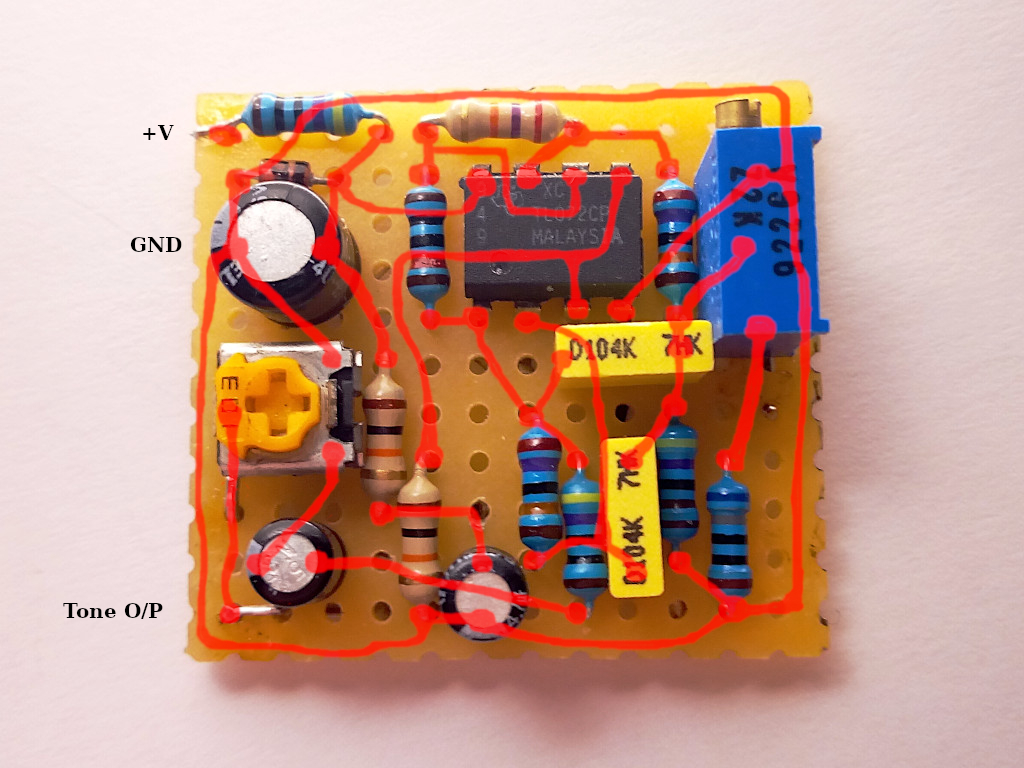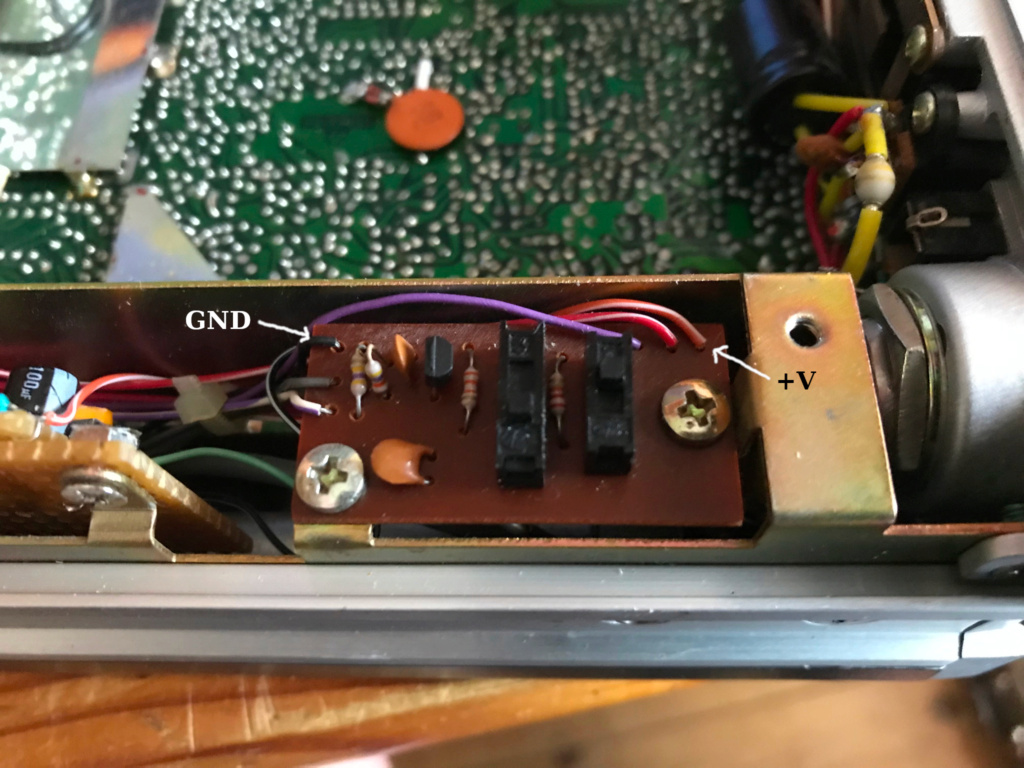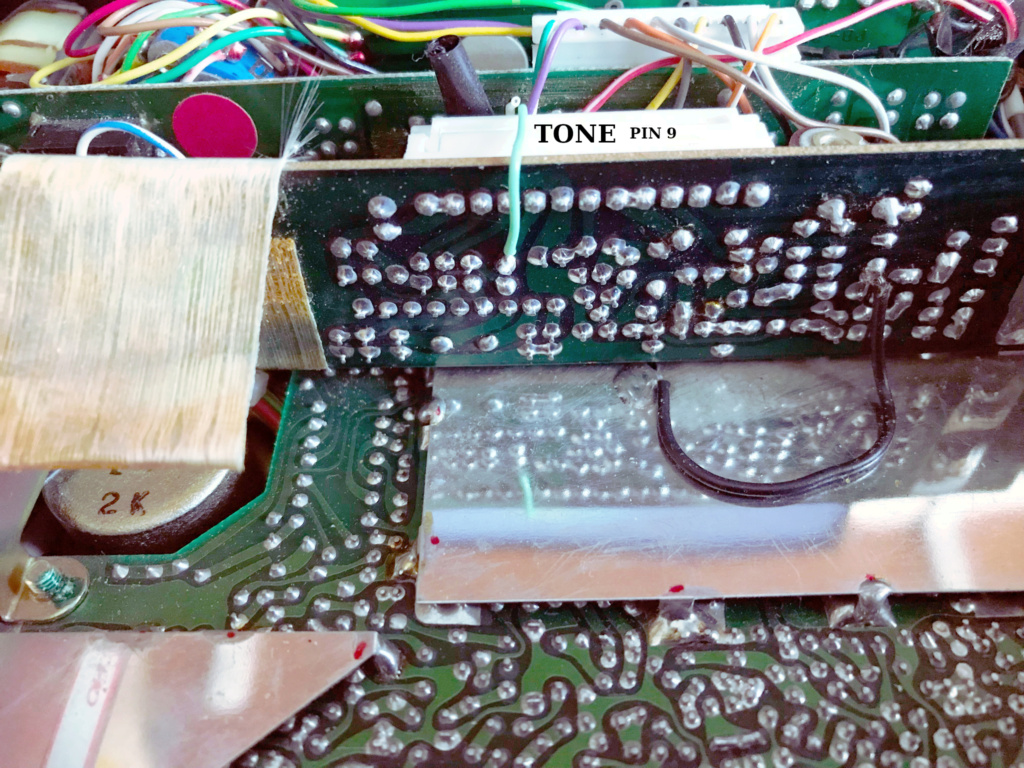Hi all,
I know this is an old posting but worthy of resurrection with an update as it has proven useful to some members of the Amateur Radio community at large.
Recently I was contacted by Greg, VK5ZGY, down in Australia who owns the whole fabulous set of these little Yaesu radios and was interested in fitting such a CTCSS unit into one of them.
As mentioned in the original posting this circuitry is not of my own devising only having scribbled notes on it and further searches to find the original details have proven unsuccessful......Apart from this posting appearing on such CTCSS searches!
So as I had spent some (considerable) time back on this to help out Greg in Australia I thought it might be best to post some further details here.
Without further ado I shall add these hoping that it may also come in useful to anyone in the Radio Amateur community.
-----------------------------------------------------------------------
 Schematic/circuit diagram as 'scribbled' into one of my many notebooks. As this was a year or so ago I had to dig through a fair amount of notebooks to find it!
Schematic/circuit diagram as 'scribbled' into one of my many notebooks. As this was a year or so ago I had to dig through a fair amount of notebooks to find it! Board layout with connections overlay shown. This is 'perfboard' with just the holes and no copper track such as used on items like 'veroboard', which is far more useful to make connections where you actually need them(!)
Board layout with connections overlay shown. This is 'perfboard' with just the holes and no copper track such as used on items like 'veroboard', which is far more useful to make connections where you actually need them(!) Just in case this helps any I 'flipped' the image so that it can be visualised from the rear whilst making the connections.
Just in case this helps any I 'flipped' the image so that it can be visualised from the rear whilst making the connections.The connections to the radio are made as follows :-
 Power connections.
Power connections. Tone output connection.Additional information and setup....
Tone output connection.Additional information and setup....I like to prove any circuitry I make (especially something frequency sensitive) with a temperature variation test and this doesn't require some wonderful laboratory but something that can be done in most homes.
First the circuit was bagged and placed in the home freezer compartments whereupon it was found to still be working after a good -10'C or so chill and stayed on the adjusted frequency. After some time to come to room temperature (+20'C) it was found to have not drifted significantly in frequency. The second test involved 'borrowing' the wife's hairdryer and giving the circuit board a good blast of hot air to bring it up to about +50'C and it still remained on frequency.
Total variation - < 0.1Hz for a 77Hz tone output at -10'C to +50'C
So it should work on the coldest winters night to a hot summer day at my QTH!

The method of setting the CTCSS frequency would usually involve a frequency counter that can read that low, but another method is available....
Firstly you'll need a radio that has/can have a selectable CTCSS squelch setting it to the desired frequency. (In my case 77Hz was chosen as it is the standard repeater tone in my area.) This was performed with the ubiquitous Baofeng UV5r programmed for such.
The Yaesu radio can then be set to transmit through a dummy load and the frequency/tone adjustment potentiometer swept through it's range until the Baofeng squelch opens. The potentiometer is then adjusted further until the Baofengs squelch closes again and then the final adjustment will be set somewhere between those limits.
After that the tone output level can be adjusted to the lowest setting whilst still being able to open the Baofengs CTCSS squelch.
Once that's done you simply attach an antenna to the Yaesu, dial up your repeaters frequency and check that you can 'open' the repeater. I could do this with the GB3BF and GB3PI within my range successfully and received good audio reports showing everything worked.
Job's a good'un!

Now why would you want to build an old fashioned 'analogue' circuit such as this to drag an old radio onto a repeater?
(Especially with only one tone?!?)
Well, to start with it was fun and made from parts I already had in my workshop/radio room. It's also much smaller than some of the commercial units available so squeezed into the space where the manufacture CTCSS would have fit. (Try finding an OEM one too....like rocking horse pooh!!!)
Sure, you can make a microcontroller version and have as many tones as you'd like.......all programmable so long as you have a programmer, software and the computer hardware to do it. You'll also find out very quickly if the microcontrollers clock frequency causes you any internal QRM/birdies to your reception or piggy-back on your transmission too!
There are some good CTCSS units available and customised for such a radio but some of us like to build our own stuff.

Oh, one tone? The repeaters near me in my regional area all use the one tone of 77Hz.....so this circuit fits the bill.
Anyway, long posting, bit of hard work on my part but hopefully someone may stumble across this and it comes in useful to them.
There is after all many facets to 'Amateur Radio' and the one I enjoy the most is helping each other out wherever and however we can.
I wish Greg well with his build, (I've already emailed him all the details), and anyone else who also stumbles across this.
All the best and enjoy your radio no matter what it may be,
Victor
M7VIC







